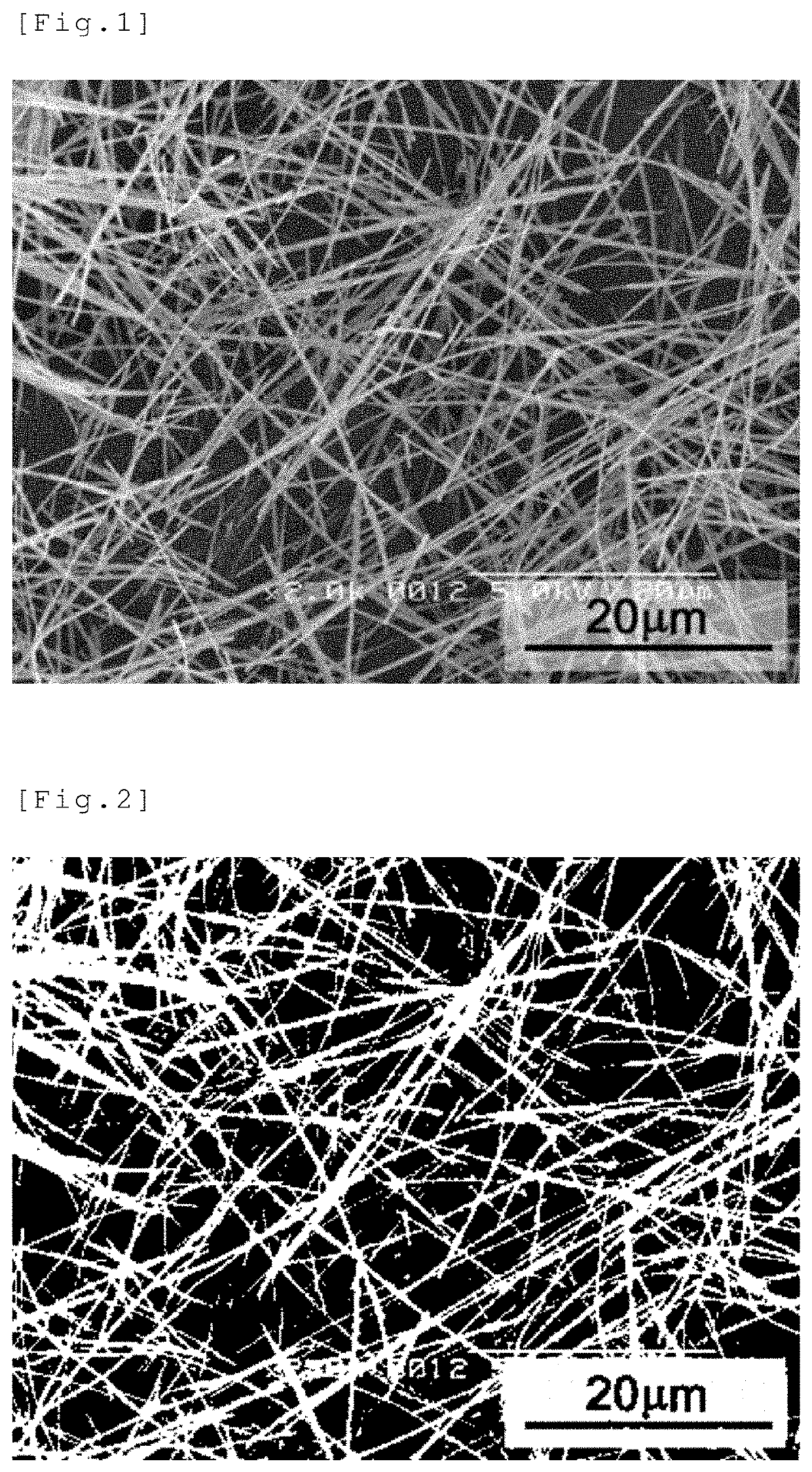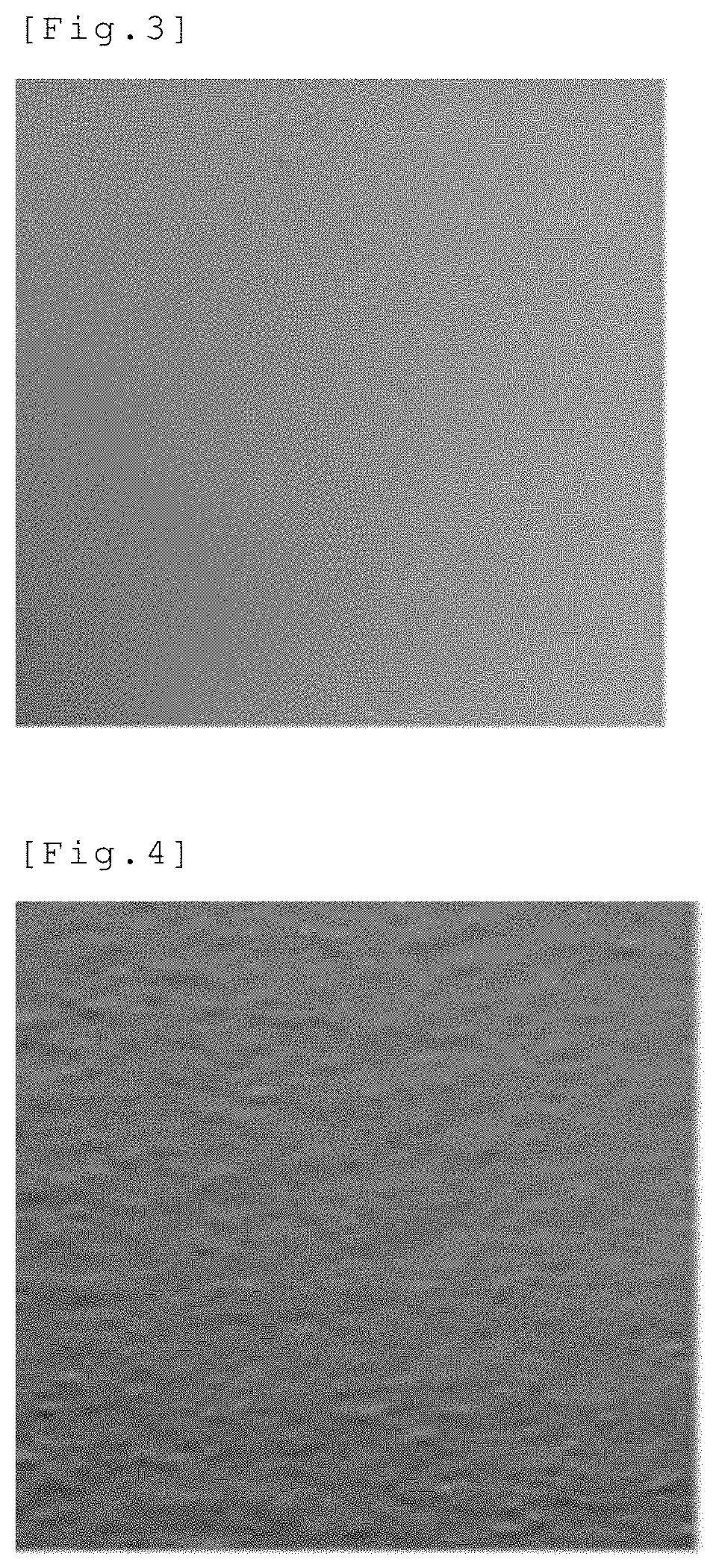Heat dissipation sheet
a technology of heat dissipation sheet and carbon fiber, which is applied in the direction of solid-state devices, basic electric elements, chemistry apparatus and processes, etc., can solve the problems of insufficient thermal conductivity in a thickness direction, insufficient flexibility, and insufficient flexibility, etc., to achieve excellent thermal conductivity, excellent thermal conductivity, and high thermal conductivity
- Summary
- Abstract
- Description
- Claims
- Application Information
AI Technical Summary
Benefits of technology
Problems solved by technology
Method used
Image
Examples
manufacturing example 1
Manufacturing of Fibrous Carbon
[0177]90 parts by mass of high-density polyethylene (manufactured by Prime Polymer Co., Ltd., HI-ZEX 5000 SR, melt viscosity: 14 Pa·s at 350° C. and 600 s−1, MFR=0.37 g / 10 min) as a thermoplastic resin and 10 parts by mass of Mesophase Pitch AR-MPH (manufactured by Mitsubishi Gas Chemical Company, Inc.) as a mesophase pitch were melt-kneaded in a co-rotating twin-screw extruder (“TEM-26SS” manufactured by TOSHIBA MACHINE CO., LTD., at a barrel temperature of 310° C. under a nitrogen gas stream) to prepare a mesophase pitch composition. The dispersion diameter of the mesophase pitch in the thermoplastic resin was 0.05 to 2 μm. Also, this mesophase pitch composition was held at 300° C. for 10 minutes, but aggregation of the mesophase pitch was not observed and the dispersion diameter was 0.05 to 2 μm.
[0178]Then, this mesophase pitch composition was molded into a 60 μm-thick planar body using a rectangular nozzle with a slit width of 0.2 mm, a slit length...
example 1
[0183]Using N-methyl-2-pyrrolidone as a solvent, polyvinylidene fluoride (manufactured by Kureha Corporation) was dissolved in this solvent so that the concentration of the binder was 10% by mass. Then, the fibrous carbon (Manufacturing Example 1) was added to this solution and kneaded to obtain a slurry. The blending amount of the fibrous carbon was set to 50% by mass with respect to the total amount of the polymer and the fibrous carbon. This slurry was poured onto a polytetrafluoroethylene (PTFE) film and molded to a thickness of 0.3 mm by a doctor blade method at a casting speed of 0.5 cm / min. After heat treatment at 80° C. for 1 hour, heat treatment was further performed at 150° C. for 2 hours to obtain a heat dissipation sheet with a length of 200 cm, a width of 150 cm, and a thickness of 0.1 mm. This heat dissipation sheet had a smooth and supple surface. Values of the thermal conductivity in the in-plane direction (MD direction) and thickness direction of the heat dissipatio...
example 2
[0184]The same procedure as in Example 1 was carried out except that the blending amount of the fibrous carbon was 25% by mass to obtain a heat dissipation sheet. Values of the thermal conductivity in the in-plane direction (MD direction) and thickness direction of the heat dissipation sheet are shown in Table 1.
PUM
| Property | Measurement | Unit |
|---|---|---|
| volume resistivity | aaaaa | aaaaa |
| packing density | aaaaa | aaaaa |
| thickness | aaaaa | aaaaa |
Abstract
Description
Claims
Application Information
 Login to View More
Login to View More - R&D
- Intellectual Property
- Life Sciences
- Materials
- Tech Scout
- Unparalleled Data Quality
- Higher Quality Content
- 60% Fewer Hallucinations
Browse by: Latest US Patents, China's latest patents, Technical Efficacy Thesaurus, Application Domain, Technology Topic, Popular Technical Reports.
© 2025 PatSnap. All rights reserved.Legal|Privacy policy|Modern Slavery Act Transparency Statement|Sitemap|About US| Contact US: help@patsnap.com


